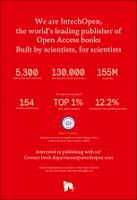Chapter Long-Distance LIDAR Mapping Schematic for Fast Monitoring of Bioaerosol Pollution over Large City Areas
Author(s)
Kolarov, Georgy
Ghelev, Chavdar
Iliev, Mihail
Paneva, Daniela
Grigorov, Ivan
Nedkov, Ivan
Stoyanov, Dimitar
Groudeva, V.
Ilieva, Ralitsa
Cherkezova-Zheleva, Z.
Language
EnglishAbstract
Light detection and ranging (LIDAR) atmospheric sensing is a major tool for remote monitoring of aerosol pollution and its propagation in the atmosphere. Combining LIDAR sensing with ground-based aerosol monitoring can form the basis of integrated air-quality characterization. When present, biological atmospheric contamination is transported by aerosol particles of different size known as bioaerosol, whose monitoring is now among the basic areas of atmospheric research, especially in densely-populated large urban regions, where many bioaerosol-emitting sources exist. Thus, promptly identifying the bioaerosol sources, including their geographical coordinates, intensities, space-time distributions, etc., becomes a major task of a city monitoring system. This chapter argues in favor of integrating a LIDAR mapping schematic with in situ sampling and characterization of the bioaerosol in the urban area. The measurements, data processing, and decision-making aimed at preventing further atmospheric contamination should be performed in a near-real-time mode, which imposes certain demands on the typical LIDAR schematics, including long-range sensing as a critical parameter, especially over large areas (10 – 100 km2). In this chapter, we describe experiments using a LIDAR schematic allowing near-real-time long-distance measurements of urban bioaerosol combined with its ground-based sampling and physicochemical and biological studies.
Keywords
LIDAR monitoring, particulate matter, atmospheric pollution, contaminationsDOI
10.5772/intechopen.87031Publisher
InTechOpenPublisher website
https://www.intechopen.com/Publication date and place
2019Classification
Environmental science, engineering and technology


 Download
Download